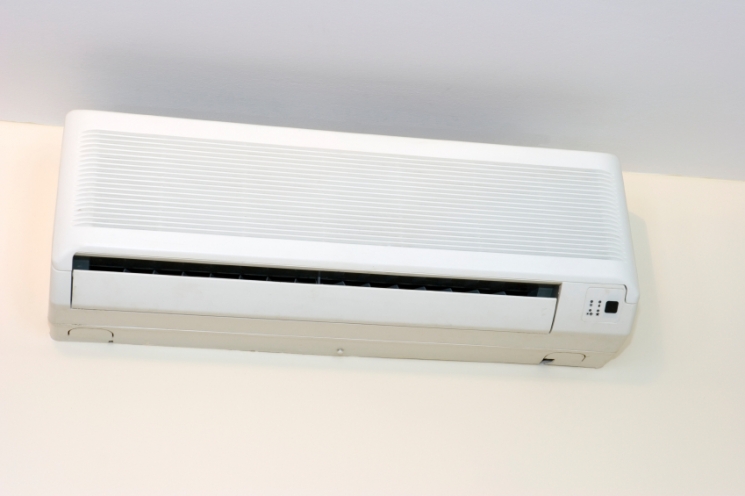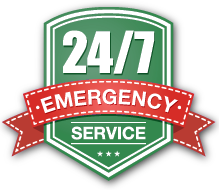
Air conditioning systems require regular maintenance to function to the best of their ability. However, we here at Albuquerque Plumbing, Heating, & Cooling understand that not everyone knows how to take care of their HVAC system. That’s why we’ve put together the following DIY air conditioning maintenance steps and procedures! Follow along to learn just how to maintain your AC so that it keeps you cool all season and for years to come!
Note: There are AC maintenance procedures that need to be performed by a professional. The following steps only pertain to the things that your average homeowner can do on their own without specialized tools or knowledge. You should still have your HVAC system maintained by a professional at least once or twice a year.
- Step 1 – Always Change Air Filters Every 3 to 6 Months
- Step 2 – Turn Off the Power to Your Air Conditioner
- Step 3 – Check and Clear the Condensate Drain Pan and Trap
- Step 4 – Check and Clean the Evaporative Coil
- Step 5 – Check and Clean the Condensing Coil
- Step 6 – Clean and Check Your Air Handler and Condensor Fans
- Step 7 – Run the System for an Hour or Two and Watch for Problems
Step 1 – Always Change Air Filters Every 3 to 6 Months
The first and easiest step in maintaining your air conditioning system is to make sure that your air filters are changed every 3 to 6 months. You should replace your filters every 3 months during heavy use seasons (Spring and Summer), and you should replace the filter every 6 months during lower use periods (Fall and Winter). However, if your air conditioning system is packaged with your heating system, then you should just default to changing the filters every 3 months year-round.
To replace your filters in a traditional package or split AC system:
- Locate Your Return Vent
The first step in changing your filters is to find the return vent closest to your air handler. This vent is usually the vent that contains your air filters. The air filter will be located behind the grill for the vent. There is often a pair of thumbscrews or a lever that will releasee the filter from its housing. - Remove and Replace the Filter
Simply remove your filter and then replace it with one that is the exact same dimensions. If your filter is not disposable, then remove it, wash it, let it dry, and then return it to the vent.
In mini-split air conditioning systems, there will be no need to replace your filters. However, there will be washable filters located at the air handler (cold air supply). Pull up on the filter to remove it, run water over it until it’s clean, then return it to the unit.
Step 2 – Turn Off the Power to Your Air Conditioner
Before you continue your AC maintenance, you will need to turn the power off to your entire HVAC system. There are a few different ways this can be done.
Some systems have a power switch located near the air handler. Just flip this switch and the power to your system will be cut off without needing to turn the power off to any other appliance in your home.
Other times you will need to flip the breaker that is assigned to your HVAC system to cut power. If your connection/circuit box is not labeled, then this may require some trial and error. If you have to flip several breakers to find the one that controls your HVAC system, then make sure you label as you go.
In addition to powering off your air handler, you will also need to turn the power to the condensing section of your AC off. Most condensers will have a breaker box or switch right next to the unit itself. Simply turn off power at that breaker/switch and then continue with your maintenance.
Step 3 – Check and Clear the Condensate Drain Pan and Trap
The third step in maintaining your air conditioner is to check the condensate pan and drain trap. Every air conditioning system will produce condensation at the evaporator coil and will have a condensate pan and drain trap just below it. Checking this is quite easy. Just visually inspect to see if there is excessive water in the pan. If there is more water than there should be, then check the drain trap on the pan itself. This trap will usually be a small “U” shaped piece of pipe and cleaning it is as simple as either blowing it out (using compressed air to clear the trap) or by simply running a brush down inside of it to clear any debris or clogs.
Step 4 – Check and Clean the Evaporative Coil
After you have checked and cleared your condensate drain pan and trap, it is time to check and potentially clean your evaporative coil. The evaporative coil is a copper and aluminum tubing coil that is located in the air handler itself (also where the condensate pan is). Just visually inspect the coil to see if there is any buildup of dirt or debris. If there is dirt buildup, then simply run water over the coil and into the condensate pan until it comes out clear and the pan drains.
Step 5 – Check and Clean the Condensing Coil
Once you have finished checking the evaporative coil, move outside to your condenser. If there is dirt or debris building up on the coil or in the condenser unit itself (there often will be as these are almost always located outside), then simply run water over the entire thing until it comes out clean. Once it’s clean, allow it to dry for an hour or two before turning the power back on.
Step 6 – Clean and Check Your Air Handler and Condensor Fans
To clean and check your air handler and condenser fans, you just need to do a quick visual inspection. A dirty fan will knock itself out of balance and cause unwanted issues with the efficiency of your system. To clean a fan, just wipe it down with a damp cloth.
Step 7 – Run the System for an Hour or Two and Watch for Problems
After you have cleaned and checked over your air conditioning system and let everything dry for an hour or two, its time to turn the power back on and to run your system for a couple of hours. During this trial running of your HVAC system, listen and watch for any telltale signs of serious issues.
If All Else Fails, Contact Our Air Conditioning Experts
If you have problems performing maintenance or checking any portion of your HVAC system, then you can always contact the Albuquerque Plumbing, Heating, & Cooling team of air conditioning maintenance experts to come out and do all this for you. We are always standing by to help and we guarantee that any job we come across will be done right the first time, every time.



